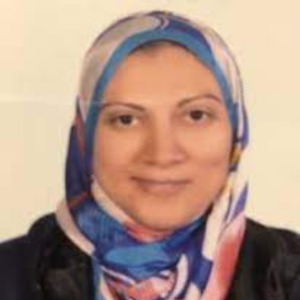Title : Quinoxaline antiviral motif between history and future: Urgent Need for New Antiviral
Abstract:
Struggling for the development of antiviral drug is a pivotal issue because of many reasons, e.g., existence of the chronic viral infections, e.g., hepatitis C virus (HCV), the emergence of new viral infections, e.g., corona virus and the development of resistance to currently used antiviral drugs [1]. The progress of the antiviral research provided different antiviral agents. For example, European patent application by Donald Delong [2] encouraged co-administration of ethyl-quinoxaline carboxylate and adamantanes in fighting influenza virus. In Swedish study, indoloquinoxaline (B220) attracted the attention as efficient antiherpes agent (Fig. 1) [3]. Hydroxy analog (9-OH-B220) was also reported as efficient antiviral agent that formed thermal stable complex with DNA [4]. Later on, compound B220 was explored for inhibitory activity against HSV-1, cytomegalovirus and varicellae zoster virus [5]. In 2007 [6] quinoxaline carboxylic ester, opaviraline was subjected to the investigation for the treatment of HIV infection (Fig. 1). Considering opaviraline as a non-nucleoside reverse transcriptase inhibitor (NNRTI) paved the way to apply it in a study that explored the mutations of drug resistance. Consequently, it explored adaptation to a mutated NNRTI binding site with small reductions in binding affinity [6]. Further, indoloquinoxaline was considered as potential semisynthetic antiviral scaffold that was designed via modification of indoloquinoline alkaloid, e.g., ellipticine. This alkaloid was proved to be natural anticancer agent with low safety margin. So, innovative researches modified it to antiviral indoloquinoxalines [5]. Also, the category of NNRTI included quinoxaline scaffold (S-2720) that exhibited potent inhibition activity against HIV-1 RT and HIV-1 [7]. The library of quinoxaline derivatives included some difuryl quinoxaline compounds with promising antiviral activity [8]. In 2012, some thioamide triazoloquinoxalines displayed promising antiviral activity against herpes simplex [9]. Recently the light was focused on simple dihydroxyquinoxaline scaffold that promoted ATPase catalytic activity of herpes simplex [10]. On continuation of our previous work to develop new antiviral agent [11] and with the guidance of the previously mentioned data, it was the idea to develop new quinoxaline derivatives to investigate their antiviral activity. Ethyl (6,7-dimethyl-2-oxo-3,4-dihydroquinoxalin-3-yl)acetate and ethyl (6-methyl-2-oxo-3,4-dihydroquinoxalin-3-yl)acetate (1a,b), 3-methylquinoxalin-2(1H)-one (4) and 1,4-dihydroquinoxaline-2,3-dione (11) were the starting precursors for nine novel quinoxaline compounds, 3a, 6, 10, 13, 15, 16, 17, 18, and 20, via adopting different nucleophilic reactions. The synthesized compounds were tested for their antiviral activity against HCV, HBV, HSV-1, and HCMV. Concomitantly, their safety profile was investigated as well as their selectivity against the viral strains. The Virology Unit at the University of Alabama recorded that, two compounds, 1a and 20, exhibited highly potent activity against HCMV with lower IC50 values (> 0.05 μM) compared to ganciclovir (IC50, 0.59mM). Compounds 1a and 20 also exhibited low cytotoxicity together with a high selectivity index.
Audience take-away:
- Audience will discover and detect concise profile of different quinoxaline compounds that are rationalized to be testified against different viral infections, two derivatives could be lead compounds for further investigation as they explored potent activity than standard antiviral with high safety margin.
- Definitely, this research will promote and expand the work on different qiunoxalines and their isosteres to get simpler and more potent new antiviral agent via lead optimization approach.
- To get more improvement, further bioavailability studies will be done with in-vivo studies to complete the profile of the research.




